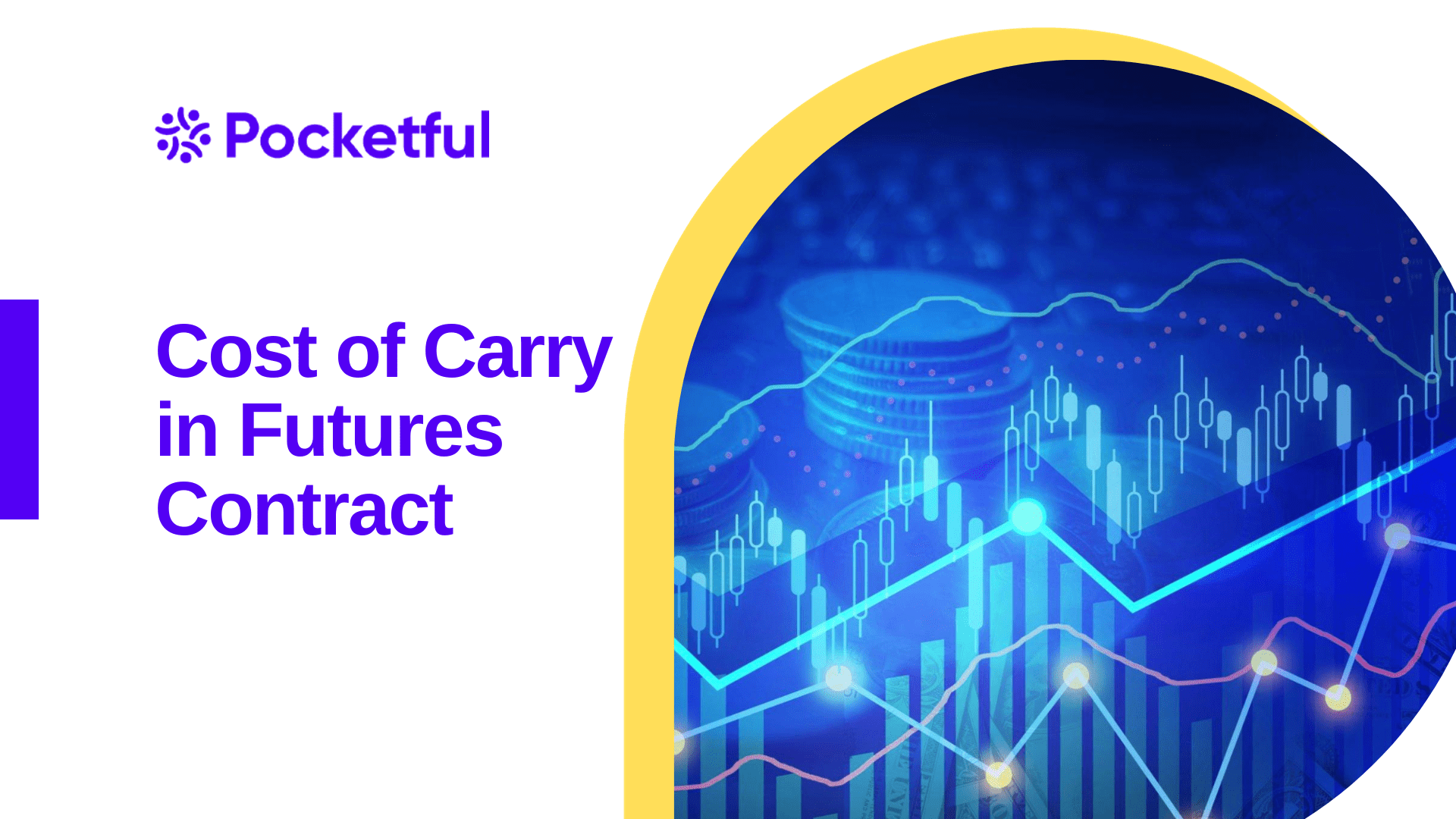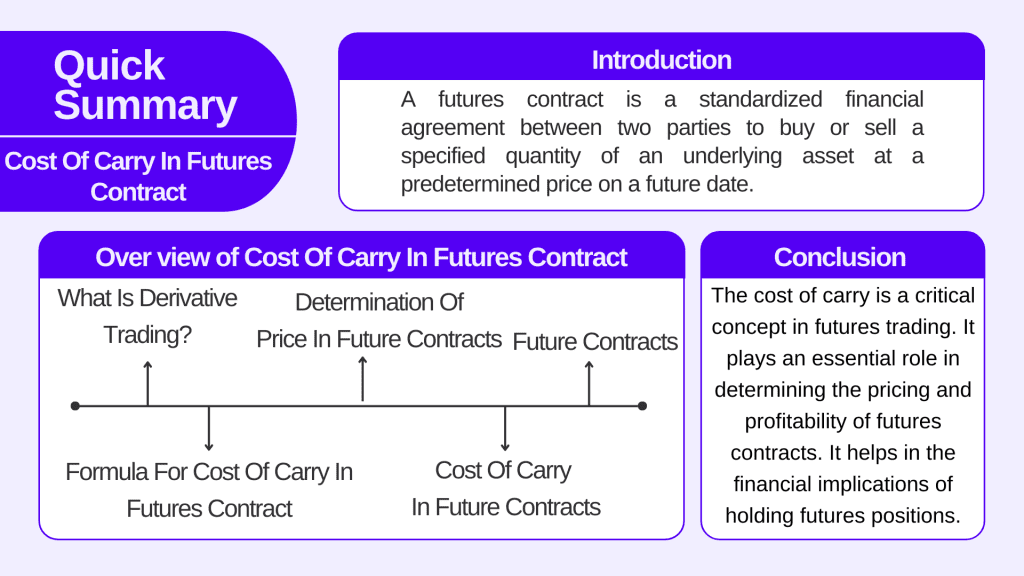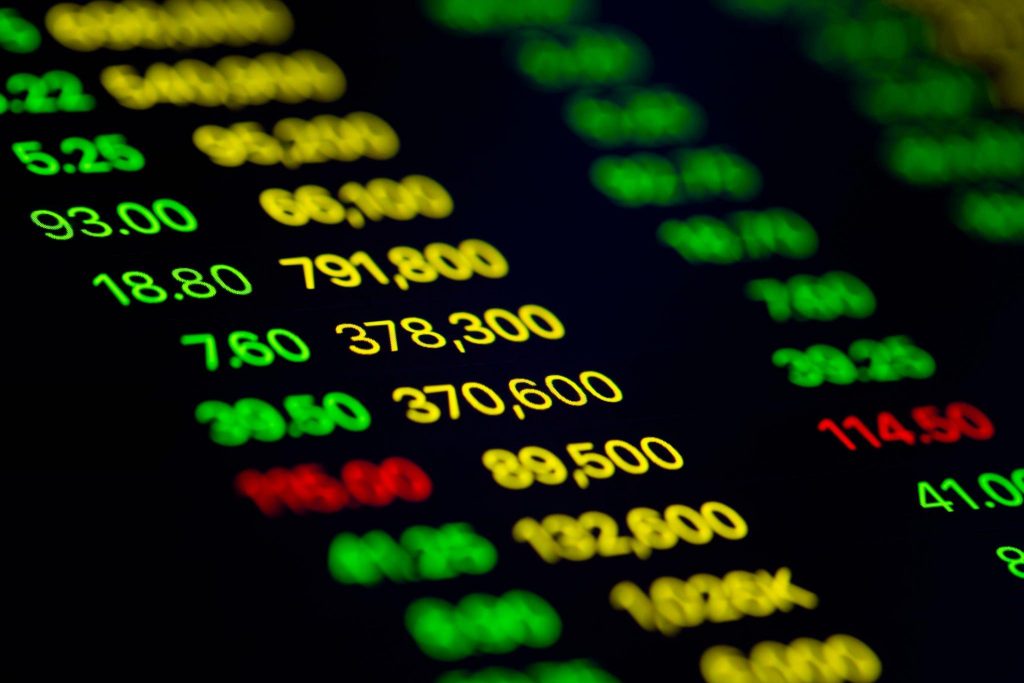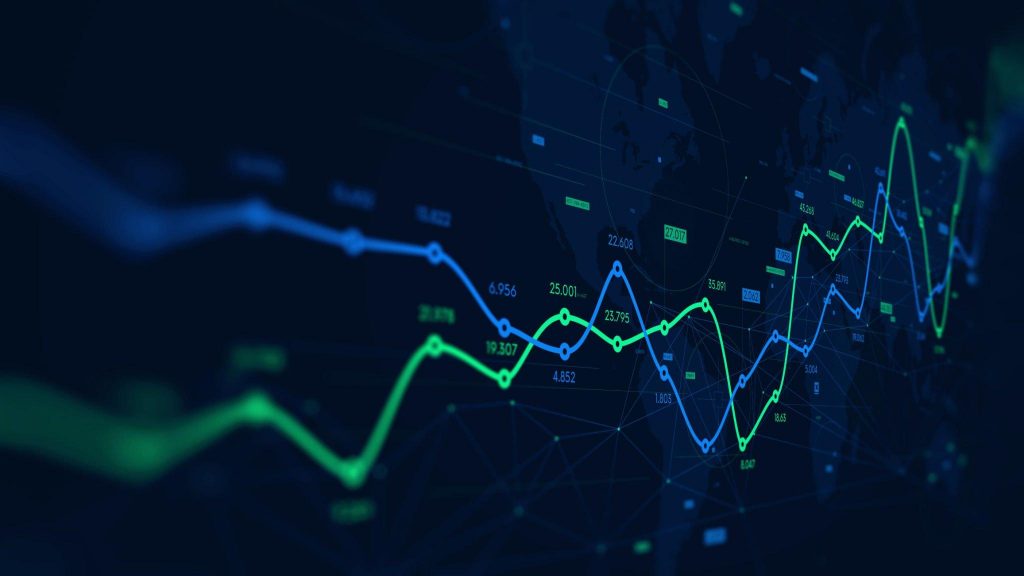| Type | Description | Contributor | Date |
|---|---|---|---|
| Post created | Pocketful Team | Oct-20-23 | |
| Heading Optimize | Nisha | Feb-19-25 | |
| Heading Optimize | Nisha | Feb-19-25 |

- Blog
- cost of carry in futures contract
Cost of Carry in Futures Contract

What is Derivative Trading?

Before understanding what is derivative trading, let’s first understand what are derivatives in the stock market. So, derivatives are basically contracts that do not have any monetary value of their own but derive it from the underlying asset. Now, derivative trading involves the buying and selling of these contracts through your demat account. These derivatives derive their value from an underlying asset, which can be a commodity, stock, currency, interest rate, or market index. The main purpose of derivative trading is to speculate on the price movements of the underlying asset or to hedge against price fluctuations.

Here are some key concepts and aspects of derivative trading:
- Futures are standardized contracts to buy or sell an underlying asset at a predetermined price and future date. They are commonly used in commodities, currencies, and financial markets
- Options give the holder the right (but not the obligation) to buy (call option) or sell (put option) an underlying asset at a specified price and within a defined time frame.
- Swaps involve the exchange of cash flows or liabilities between two parties based on a notional principal amount. Common types of swaps include interest rate swaps and currency swaps.
- Forwards are similar to futures contracts but are not standardized and are typically traded over-the-counter (OTC). They involve an agreement between two parties to buy or sell an asset at a future date and an agreed-upon price.
- It’s important to note that derivative trading can be complex and carries a higher risk level than traditional stock trading. As such, it’s vital for traders to carefully understand the derivative products they are trading and have a clear trading strategy to manage market risk effectively.
Before diving deep into the cost of carry in the futures contract, here is a detailed overview of what are future contracts.
Future Contracts

A futures contract is a standardized financial agreement between two parties to buy or sell a specified quantity of an underlying asset at a predetermined price on a future date. These contracts are traded on organized exchanges and serve various purposes, including hedging against price fluctuations and speculating on future price movements.
Read Also: What is Carry Trade? Definition, Example, Benefits, and Risks
Here are the key components and characteristics of futures contracts:
- Futures contracts are highly standardized, with predefined terms and conditions, including the quantity of the underlying asset, the contract’s expiration date (delivery month), and the contract’s price, which is known as the futures price or strike price.
- Futures contracts are marked to market daily. This means that any profit or loss on the contract is realized and settled daily. If the contract has moved in your favour, you receive a gain; if not, you incur a loss.
- Many market participants use futures contracts to hedge against price fluctuations in the underlying asset. For example, a wheat farmer can use wheat futures to lock in a selling price and protect against a potential price drop. This is known as Hedging.
- There are certain opportunity costs linked with futures contracts. These costs in the context of futures contracts refer to the gains or losses that a trader or investor foregoes by choosing to enter into a specific futures contract and allocate their capital to that contract. The missed opportunity to invest in other assets or strategies that might have offered a better return.
- In the context of futures contracts, the terms “near month” and “far month” refer to the different dates of expiry of futures contracts within the same underlying asset.
- The “near month” refers to the futures contract with the closest expiry date relative to the current date. It is the contract that will expire soonest.
- Traders and investors often use the near-month contract to establish short-term positions or to respond to forthcoming market developments. Near-month contracts generally have greater trading activity and volume.
- The “far month” refers to futures contracts with expiry dates in the future compared to the current date.
- ·Traders and investors may use far-month contracts for longer-term trading or investment strategies. Far-month contracts typically have lower trading volumes.
Determination of Price in Future Contracts

The price of future contracts is determined by various key factors, including supply and demand dynamics, the current price of the underlying asset which is also known as Spot Price, interest rates, carrying costs, etc.
Here’s an overview of the primary factors that influence the pricing of futures contracts:
1. The current market price of the underlying asset, known as the “spot price,” is one of the most fundamental factors affecting the price of a futures contract. The futures price typically coincides with the spot price as the contract’s expiry date approaches.
2. Interest rates play a significant role in futures pricing. If interest rates are high, it becomes more expensive to hold a futures position because traders have to finance their positions. The relationship between interest rates and futures prices is known as the cost of carry.
3. For assets like stocks, dividends and income generated by the asset can impact futures pricing. In the case of stock index futures, for example, expected dividends can influence the futures price.
It’s important to note that the pricing of futures contracts aims to remove the arbitrage opportunities, meaning the futures price should converge with the spot price by the contract’s expiration. This process is known as the “cost-of-carry model.” If futures prices deviate significantly from the spot price, it can create opportunities for arbitrage traders to profit by buying low and selling high (or vice versa). To learn trading from scratch check out this blog.
Read Also: What Is Contract Note and Its Significance
Cost Of Carry in Future Contracts

The “cost of carry” in the context of futures contracts refers to the costs associated with holding a position in a futures contract until its expiration date. These costs primarily include
Interest cost
If you buy a futures contract, you are essentially agreeing to buy the underlying asset at a specified future date. To do this, you may need to borrow money or use your own funds to pay for the contract. The interest or financing costs associated with borrowing this money represent a significant part of the cost of carrying.
Carrying Costs
These are costs related to holding the physical underlying asset if you intend to take delivery upon the contract’s expiration. These costs might include storage fees, insurance, and maintenance costs for the asset.
Dividends & Income
If the underlying asset pays dividends or generates income during the holding period, you might have to factor these into the cost of carry. The cost of carry is essential to consider while trading in futures because it can impact the profitability of a position & convenience yield which you are able to earn especially in situations where the cost of carry exceeds the gains from the futures contract.
Formula for Cost of Carry in Futures Contract
Cost of Carry (CoC) = (Futures Price – Spot Price) + Financing Costs – Income
Here’s what each component represents:
Futures Price
This is the current price of the futures contract you are trading.
Spot Price
The spot price is the current market price of the underlying asset that the futures contract represents.
Financing Costs
This component accounts for the interest costs associated with borrowing the money to trade the futures contract. For long positions, this cost is usually positive and for short positions, it can be negative, as you may earn interest on the money received from the sale.
Income
Refers to any benefits generated from holding the futures contract. For example, if you are holding a stock index futures contract, you may receive dividends.
Read Also: What is Future Trading and How Does It Work?
Conclusion
In conclusion, the cost of carry is a critical concept in futures trading. It plays an essential role in determining the pricing and profitability of futures contracts and the above-mentioned formula takes into account various factors, including the difference between the futures and spot prices, financing costs or benefits, and any income generated from holding the contract. It also helps in analysing the financial implications of holding futures positions.
FAQs (Frequently Asked Questions)
Define Future Contracts.
A futures contract is a standardized financial agreement between two parties to buy or sell a specified quantity of an underlying asset at a predetermined price on a future date.
What is the cost-of-carry model?
The pricing of futures contracts aims to eliminate arbitrage opportunities, meaning the futures price should converge with the spot price by the contract’s expiration. This process is known as the “cost-of-carry model.
Mention the formula of cost-of-carry in futures contracts.
The formula for the same is mentioned belowCost of Carry (CoC) = (Futures Price – Spot Price) + Financing Costs – Income
What is near month & far month in futures contract?
The “near month” refers to the futures contract with the closest expiry date relative to the current date and the far month is referred to futures contracts with expiry dates in the future compared to the current date.
Explain Carrying costs.
These are costs related to holding the physical underlying asset if you intend to take delivery upon the contract’s expiration. These costs might include storage fees, insurance, and maintenance costs for the asset.
Disclaimer
The securities, funds, and strategies discussed in this blog are provided for informational purposes only. They do not represent endorsements or recommendations. Investors should conduct their own research and seek professional advice before making any investment decisions.